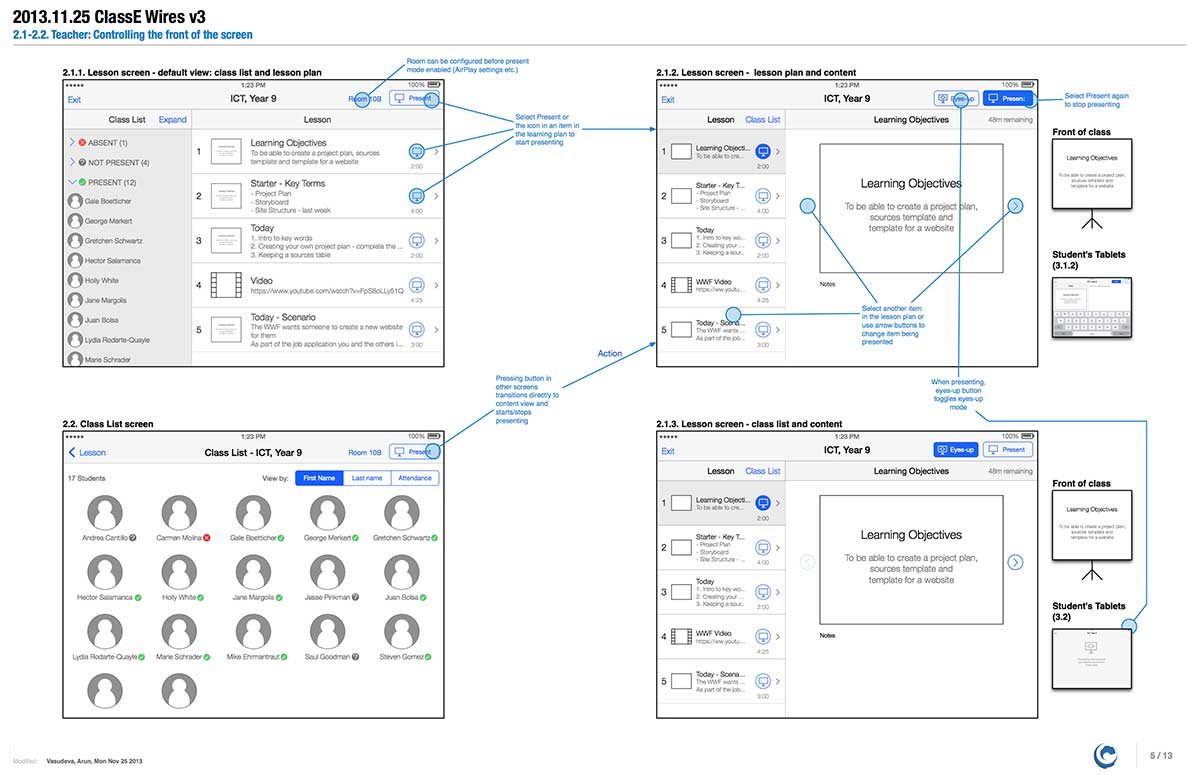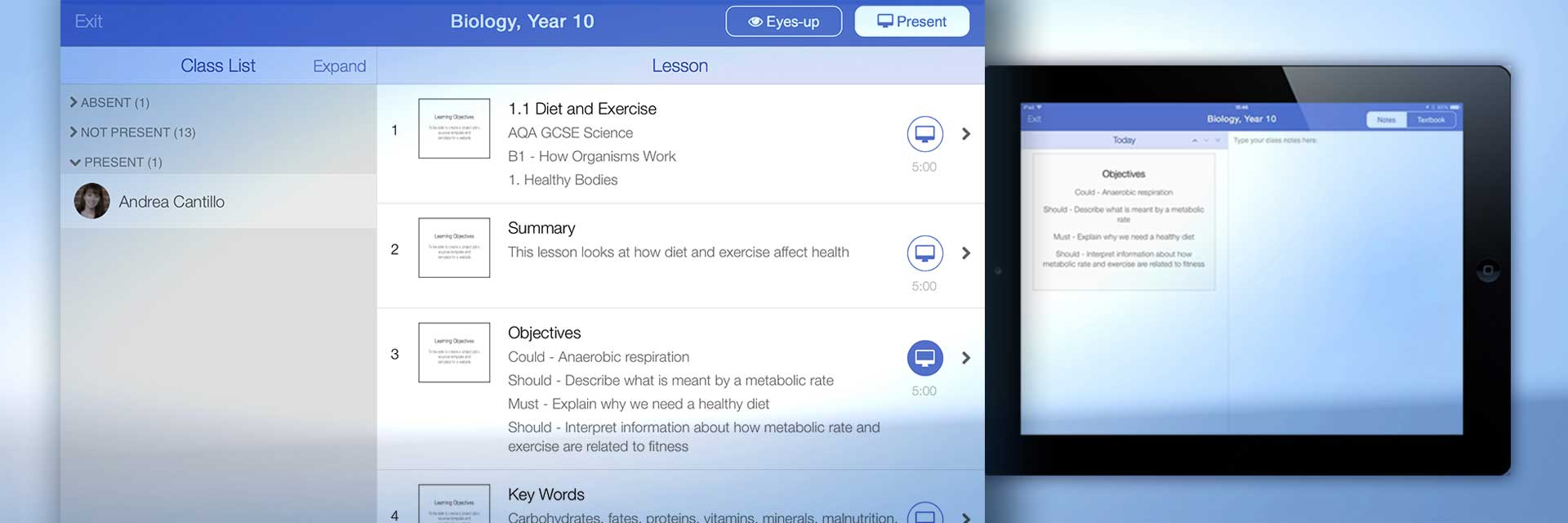ClassE
Pearson UK
Very low maintenance classroom management and collaboration tool
The Challenge
Teachers need classroom management tools that just work
A common problem that is heard from teachers is that whilst they would like use make better use of technology in the classroom, it is simply too much work to do so. Most schools, unlike offices, don't have dedicated staff available to keep their systems running smoothly, and often it's just simpler to use paper for things like sharing and receiving coursework, keeping the register, and so on.
The objective of ClassE is to prototype a future tablet-based classroom management and interaction tool, that requires low to no maintenance and is extremely easy and effective to use.
Design Highlights
- We first spoke at length with experts and teachers to get to understand where the real nature of the problem lay. Schools may have IT equipment, projectors and electronic whiteboards, but often they are not working properly since they need maintaining and configuring. This job often falls upon a volunteer teacher who simply doesn't have the time to keep on top of it.
- We also learned that schools often have invested in some form of management solution, e.g. for keeping grades, attendance or other data, but they are usually not fully integrated. Our solution needed to be able to fit into schools' existing investments in this way.
- Research indicated that adoption of tablets in the UK was increasing rapidly in the UK, to the point where in a few years we could be expecting widespread usage. This made a good scenario for us to focus on.
- Naturally, one of the key design objectives was to create an experience that is extremely intuitive and easy to use, both for teachers and students. At the same time, it has to be powerful and versatile enough to handle a wide range of teaching subjects, and to integrate well into existing school IT systems.
- Bluetooth LE (or iBeacon) technology available in tablets holds out the potential for tablets to recognise and connect to each other automatically. As well as this, each tablet can know when it's in the right classroom, so registration is handled automatically, as soon as each student switches on their tablet. Because of this, we decided on a tablet-based solution.
- We explored some early scenarios where we thought a solution could offer real value, and shared these with our stakeholders to validate with them. They also gave us indication of where to focus in on the most important area to start with.
- The teacher could connect to a central server but also work peer-to-peer if no network is available. If other equipment such as projectors are available in the classroom then they can be used too, via connections such as AirPlay.
- The teacher's tablet has full control of the projector at the front of the class, and all the students' devices to prevent distractions. They can also issue and review assignments right to student's devices, both in-class and for completion later at home.
Schools may have IT equipment but often it is not working properly
Outcome
We produced a working proof of concept, that demonstrated that the technology could work, and that made our stakeholders very happy. They demonstrated the concept at a trade show to gauge interest and got an overwhelming response.
The concept got an overwhelming response when demoed at a trade show
The product is now under active development.Early concept sketch for understanding and validating concept with stakeholders:

Sample of detailed wireframes design:

